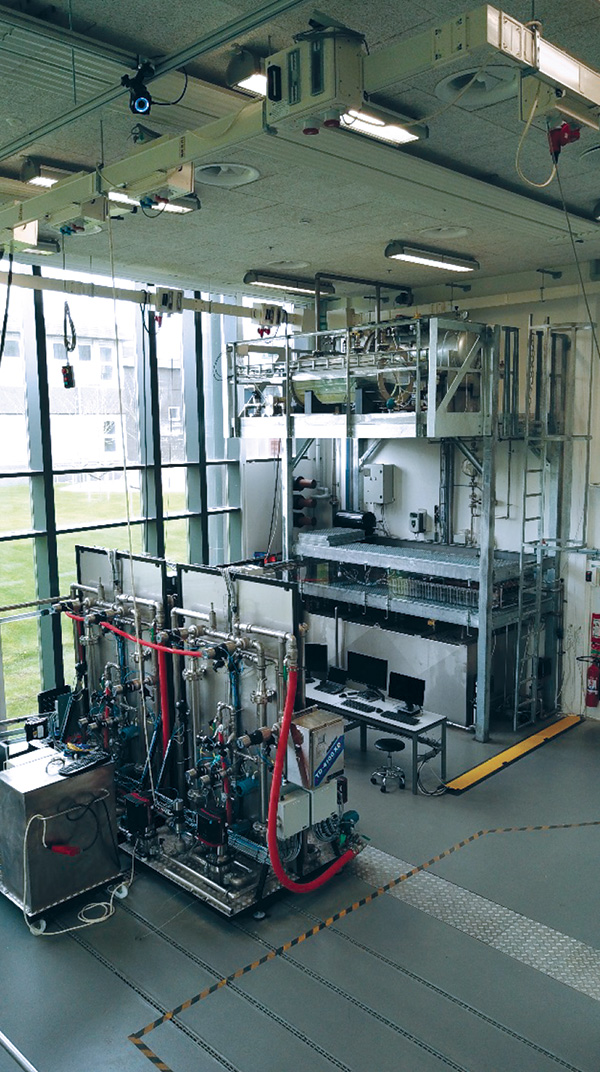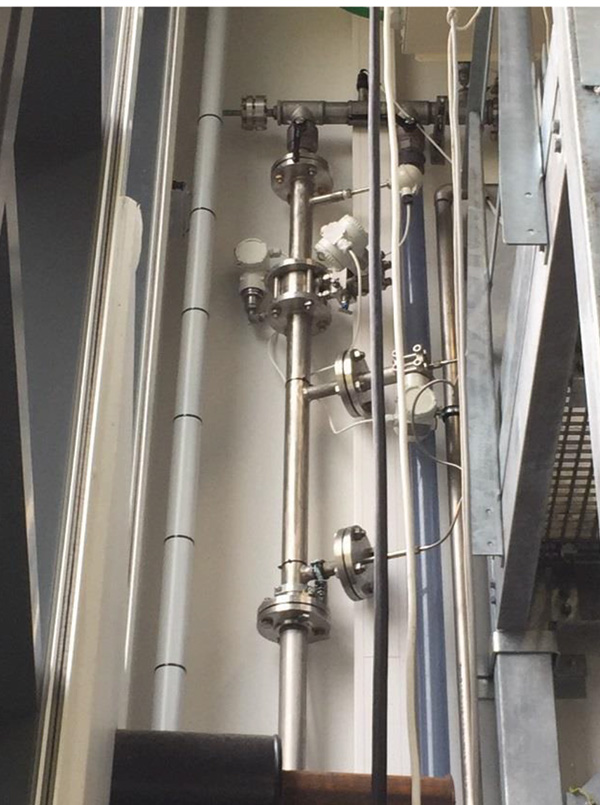December 2019, Vol. 246, No. 12
Features
Manipulation of Multi-Phase Flow in Offshore Pipelines
By Simon Pedersen, Department of Energy Technology, Aalborg University
In recent years, offshore oil and gas production is facing an increasing challenge related to the multi-phase flow in the transportation pipelines; the pipelines transporting fluids from the reservoirs to the separation platforms. The typical configuration of this process can be observed in Figure 1, where the common separation units also are included.
The multi-phase flow issues are related to the decreasing reservoir pressure and increasing water cut in mature reservoirs. Sea water is typically injected into the reservoir to keep a decent reservoir pressure and hence also production rate, however, over the years this also increases the water cut significantly in the production facilities.

Today, it is normal that the extracted mixture contains a water cut of more than 90%, which renders the separation process a key factor as production must comply with the local environmental regulations¹. In addition to this, severe slugging is more likely to occur in the multi-phase transportation pipelines, because of the reduced reservoir pressure caused by many years of production. Severe slugging acts as a huge disturbance to the separation process due to the large fluctuations in pressure and production rate over time². The flow oscillations, especially, can cause problems for the separation units.
A three-phase gravity separator is normally installed as the first stage of the separation process, where the gas, water, and oil each got one dedicated outlet, respectively. In the separator, a level controller is ensured a constant liquid level in the separator.
Overall, the transportation pipelines downstream mature reservoirs are important to investigate in-depths because of the bad influence on the daily production rate and downstream separation units3.
Oil Rig Pilot Plant

At Aalborg University Esbjerg a pilot plant is constructed to emulate the entire offshore process in a plant-wide manner. The pilot plant emulates the entire system from well to hydrocyclone, such that the entire facility emulates a well-pipeline-riser-separator-hydrocyclone process. The research team working on the setup is dedicated to reducing the problems linked to the offshore multi-phase production by improving the automatic control strategies on the existing offshore platforms. An intelligent software solution minimizes the implementation cost compared to alternative hardware solution.
Figure 2 shows main parts of the pilot plant emulating the entire well-pipeline-riser-separator-hydrocyclone system.
Two 6-meter risers with gas-lifting (Figure 3) lead the multi-phase pipelines to the topside separation platform, where a multi-phase flow meter is installed to monitor the flow (Figure 4). At ground level the supply tanks are located to finish the closed flow-loop, as well as the control station for the operator to actuate and monitor the entire plant.
The testing facility is designed to emulate the entire system, but also has the flexibility to tests the subsystems isolated. In this way, the production pipelines and risers or wells can be investigated, respectively, without including the rest of the system. This can be useful when new equipment must be tested.
If a constant pressure source is assumed to be present at the reservoir an inlet pressure controller can be included on the inlet pump to guarantee a constant inlet pressure. If a constant flow source is assumed to be present at the inlet to the pipeline (outlet of the well) a flow controller can be installed on the pump. The gas inlet is emulated by a compressor with an outlet valve.

Typically, constant inlet gas flow or constant gas volume fraction (GVF) are being applied. In this way, the running conditions can easily be modified to both emulate several scenarios and test the varying operating conditions.
Potential Solutions
The examined testing facility has given the possibility for improving the understanding of significant parts of the upstream production processes which in many real cases are unknown, partly due to the limited number of sensors and actuators in the subsea pipeline sections.
One solution is to apply an anti-slug feedback controller for either the topside choke valve upstream the gravity separator or the gas-lifting at the bottom of the well or riser. In this way, the fluctuations in production rate over time is reduced, which gives better operating conditions for the separation facilities, while it also can improve the average production rate significantly².
The topside choking can help slowing down the severe slugs in the blowout stage and in this way, give a steady flow. However, any unnecessary choking will lead to a reduction in production rate. Thus, it is important to use an intelligent anti-slug controller with two objectives:
Eliminate the severe slugs
Keep an acceptable production rate.
This can be complicated, because literature shows that large valve openings lead to severe slugs even for closed-loop systems where feedback controllers are included in the design²,³.
As addressed the alternative solution is to apply gas-lifting, such as illustrated in Figure 3, where the increase in GVF eventually will give annular flow instead of severe slug flow. If too much gas is injected to the vertical sections (either wells or risers) the overall production rate will decrease because the increase in GVF will dampen the liquid production.
However, the main problem linked to gas-lifting is typically the limited compressor capabilities, and hence the amount of injected gas needed to eliminate the severe slugs are impossible to provide on many existing platforms.

Furthermore, multi-phase can be hard to monitor because of the varying flow over time. An example is during a severe slug cycle in which the GVF goes from 0% to 100% within a single cycle. A normal single-phase flow meter, such as a Coriolis flow meter cannot measure this precisely, and thus the industry needs to investigate alternative measurement methods.
In Figure 4 one of the risers has a multi-phase flow meter installed, which is based on a virtual flow measure principle. Here, the flow is not directly measured but the flow is estimated based on traditional sensors; mainly pressure and temperature transmitters. A precise flow transmitter is needed no matter which type of feedback controller is considered, unless the feedback controller used one of the already existing topside pressure measurements.
No matter which strategy the industry will turn to, a pilot plant like the one at Aalborg University Esbjerg can be used to investigate and demonstrate both new software and hardware solutions, which can be hard to directly develop on the existing platforms. In this way an oil rig pilot plant can be useful for testing new strategies before real implementation.
The Future
It is hard to predict where the offshore oil and gas industry is in the future. However, as a decreasing number of reservoirs are explored the mature reservoirs will likely be kept in production as long as possible. Hence, the multi-phase flow issues related to mature reservoirs will be an even larger topic in the future.
As any subsea equipment is an expensive investment the cheapest solutions are often related to simple software solutions, where the feedback controllers are one subject. A pilot plant, like the one examined here, can both be useful to investigate these problems, but also to demonstrate both new equipment and feedback control algorithms before actual implementations.
References
[1] Durdevic, P., 2017. Real‐Time Monitoring and Robust Control of Offshore De‐Oiling Processes. PhD Thesis, Aalborg University, Department of Energy Technology.
[2] Pedersen, S., 2016. Plant-Wide Anti-Slug Control for Offshore Oil and Gas Processes. PhD Thesis, Aalborg University, Department of Energy Technology.
[3] Pedersen, S., Durdevic, P., Yang, Z., 2017. Influence of riser-induced slugs on the downstream separation processes. Journal of Petroleum Science and Engineering, Vol. 154, p. 337-343
Author: Simon Pedersen is an assistant professor in Department of Energy Technology at Aalborg University Esbjerg. He earned his bachelor’s degree in data and electronics in 2011, master’s degree in intelligent reliable systems in 2013, and Ph.D. in anti-slug control in offshore oil and gas processes in 2016, all from Aalborg University Esbjerg. His main research focus includes automation in oil and gas processes and robotics.





Comments